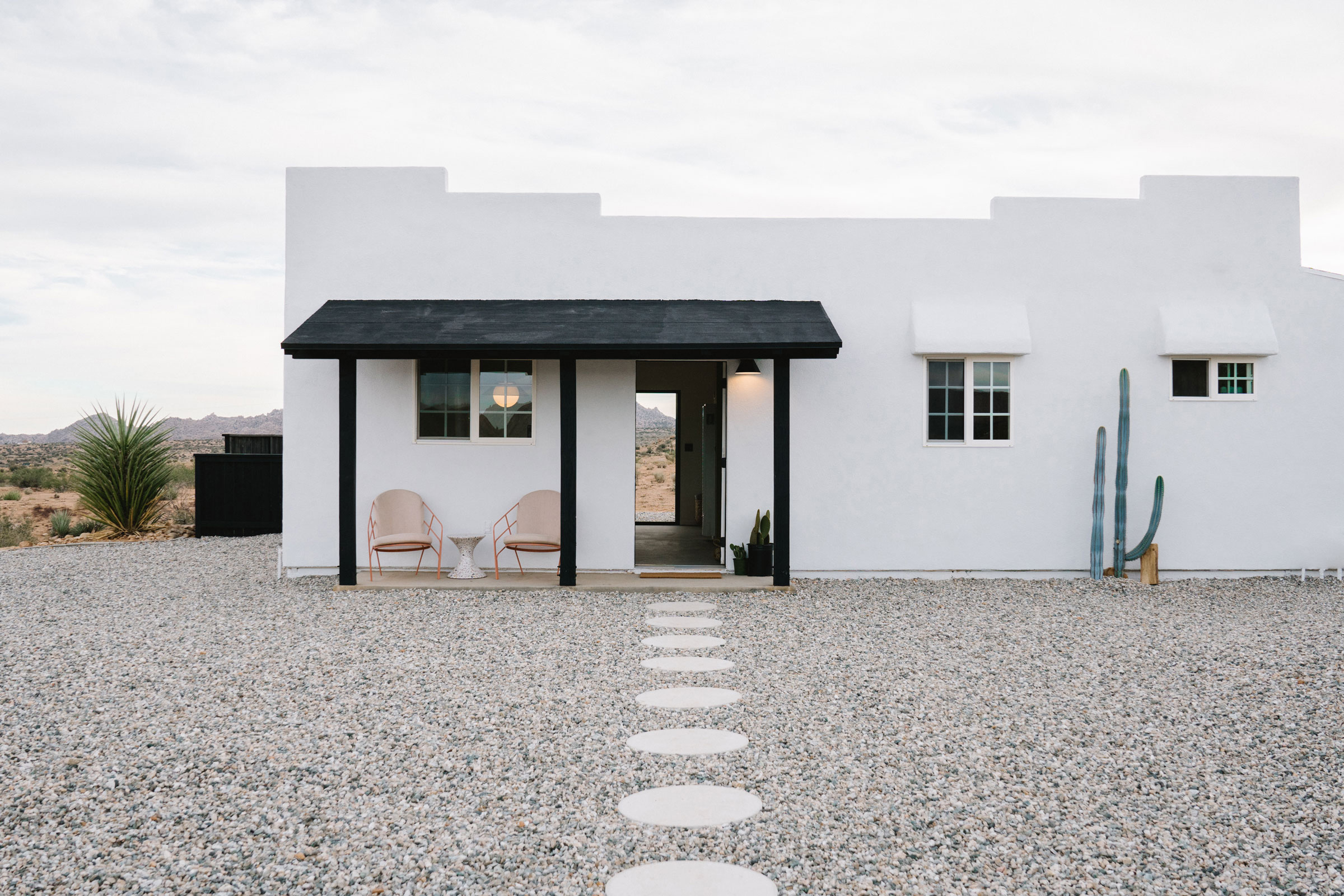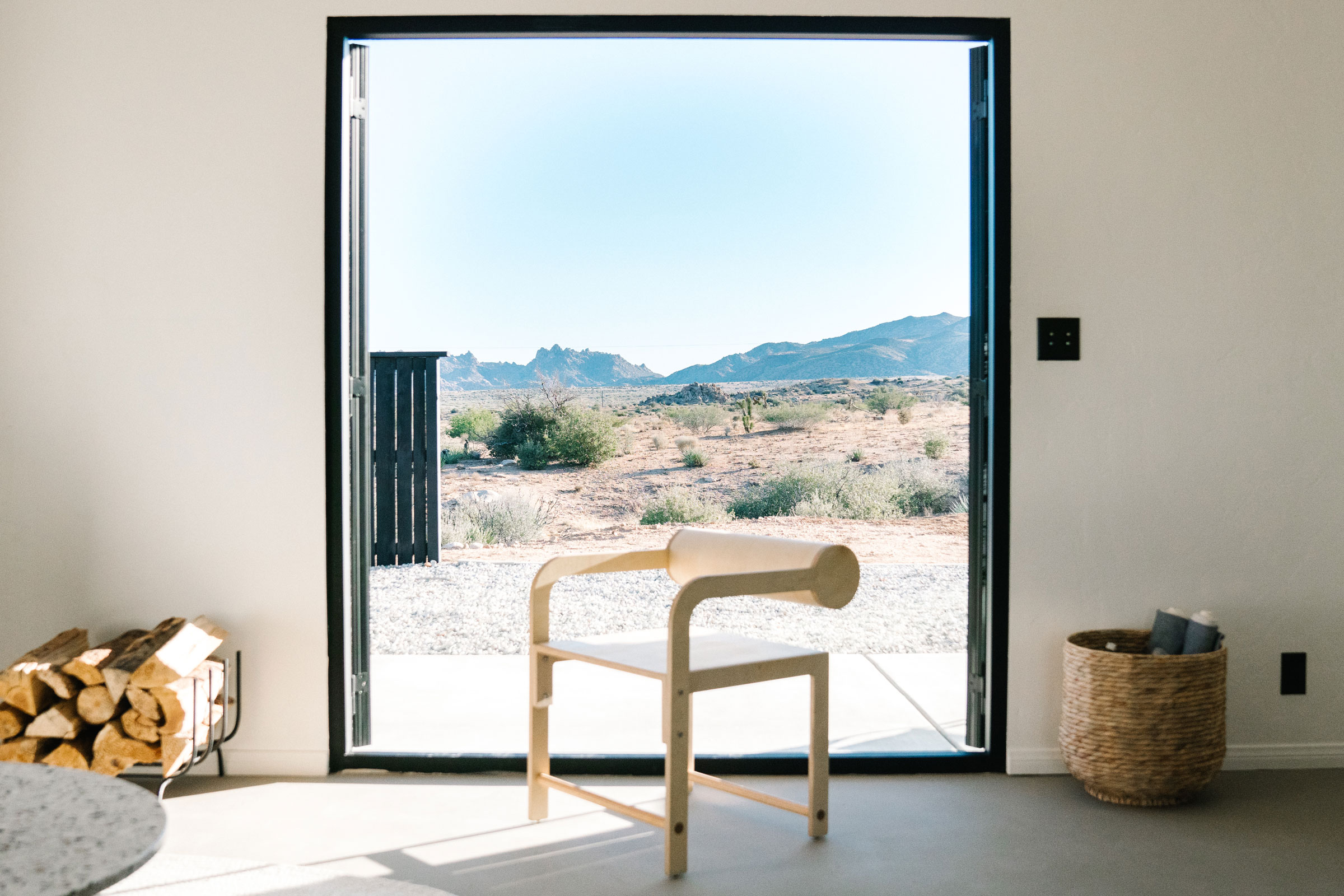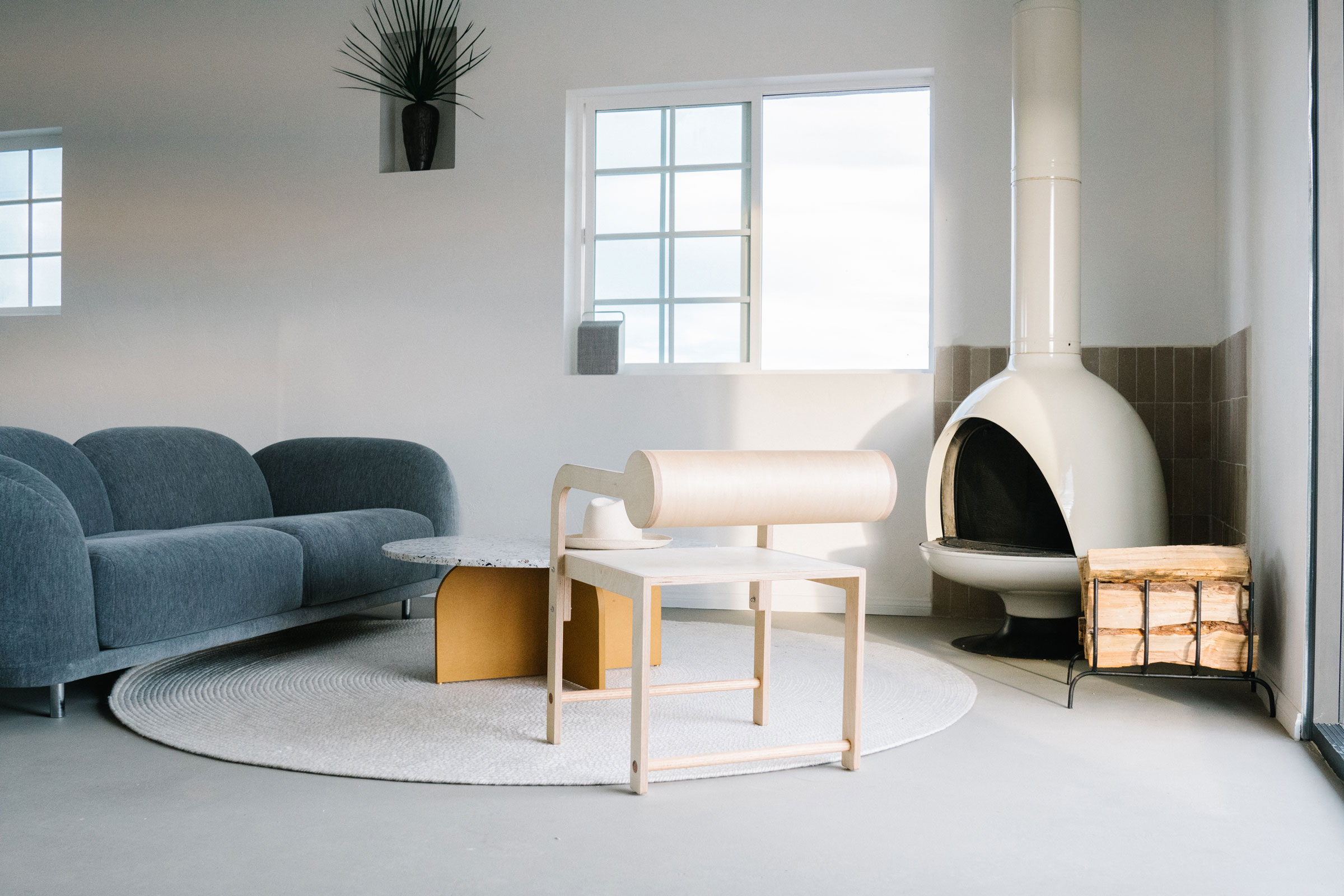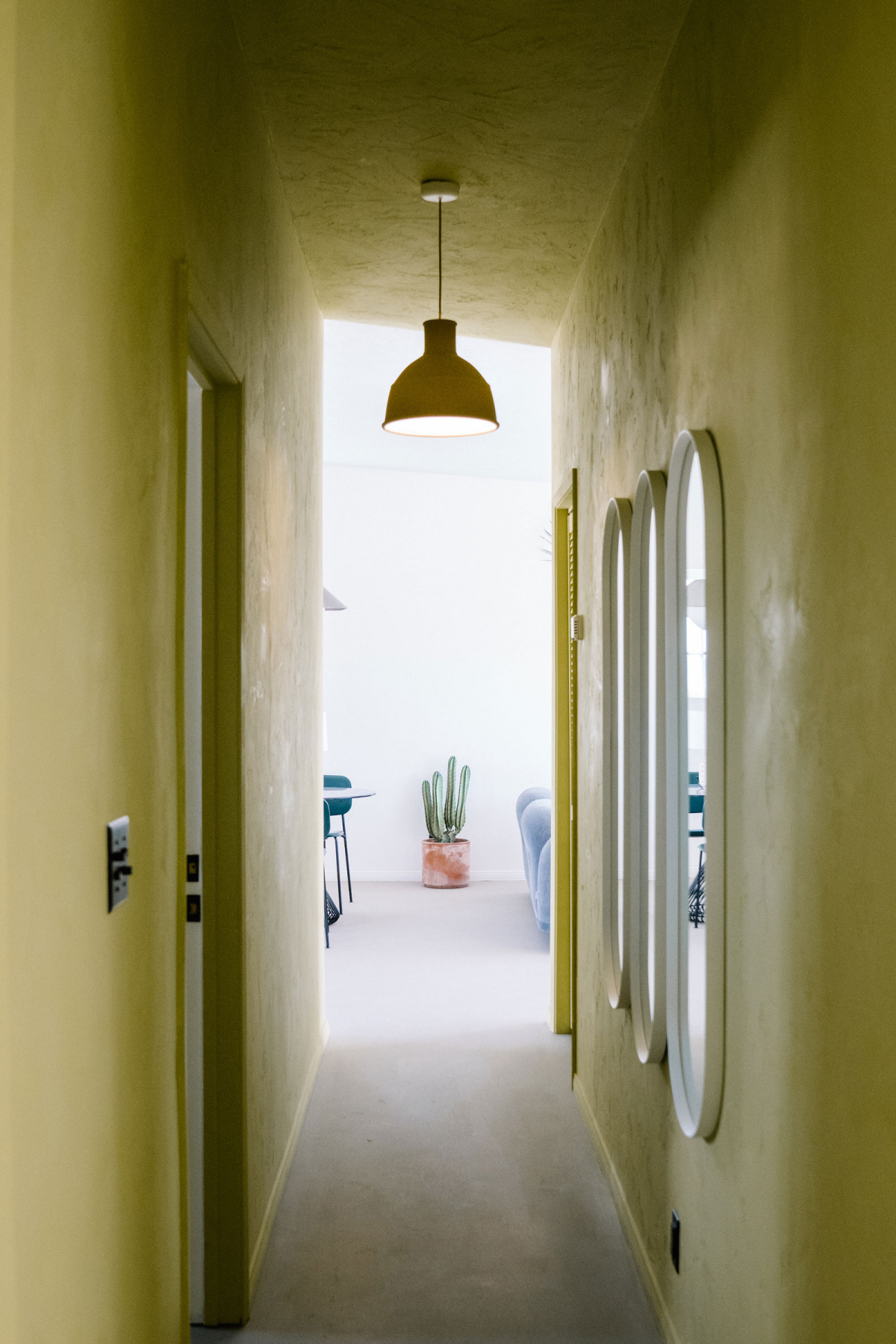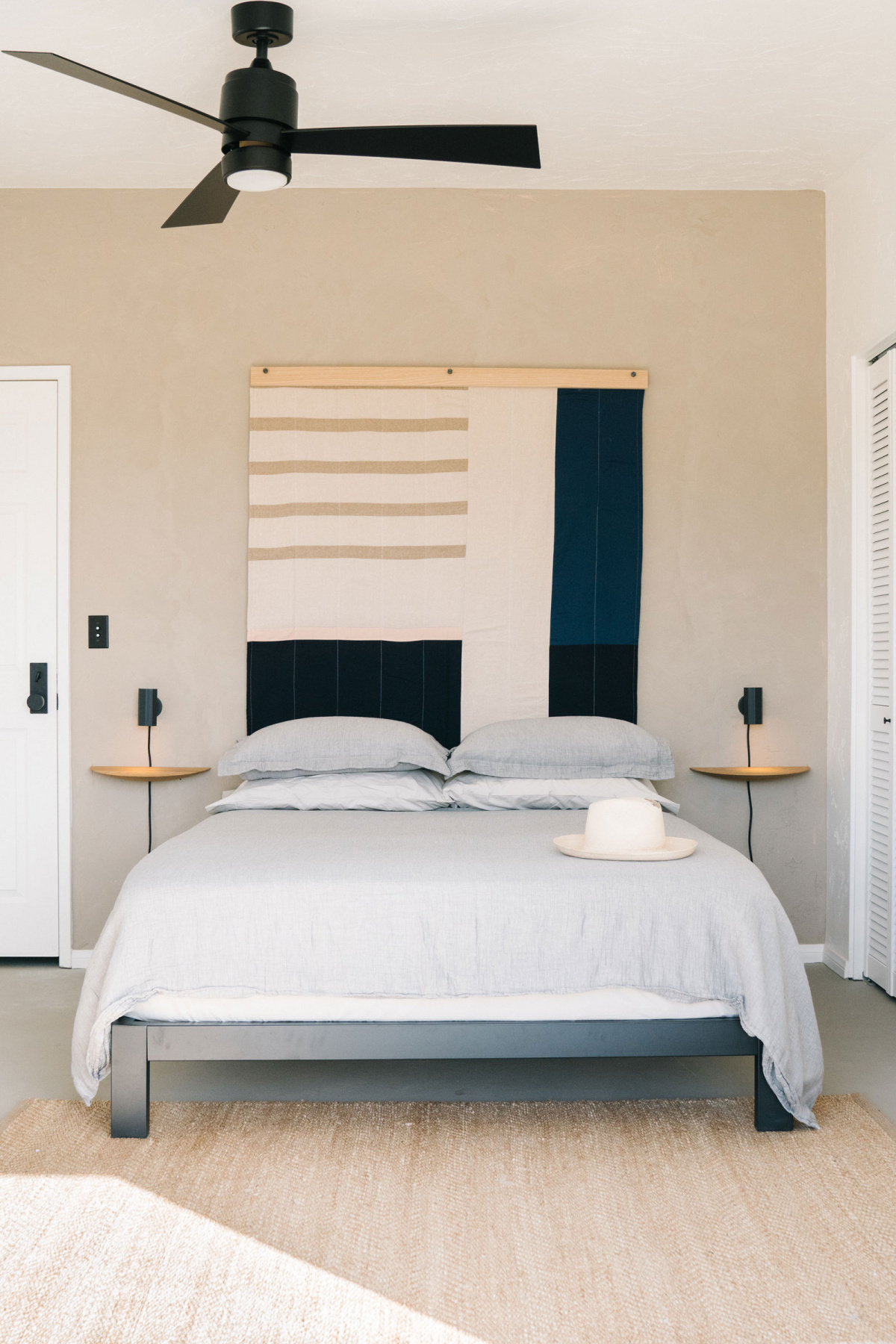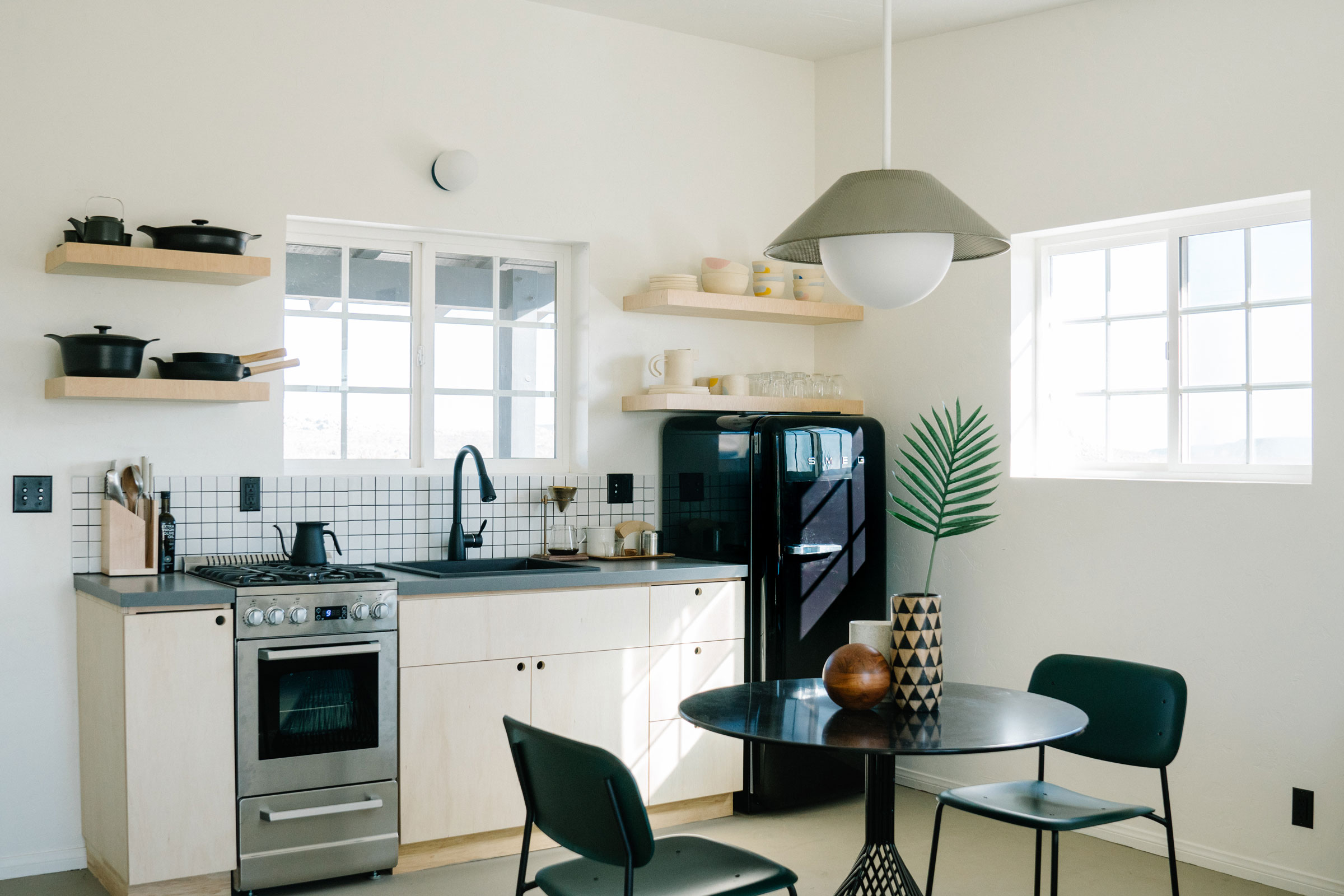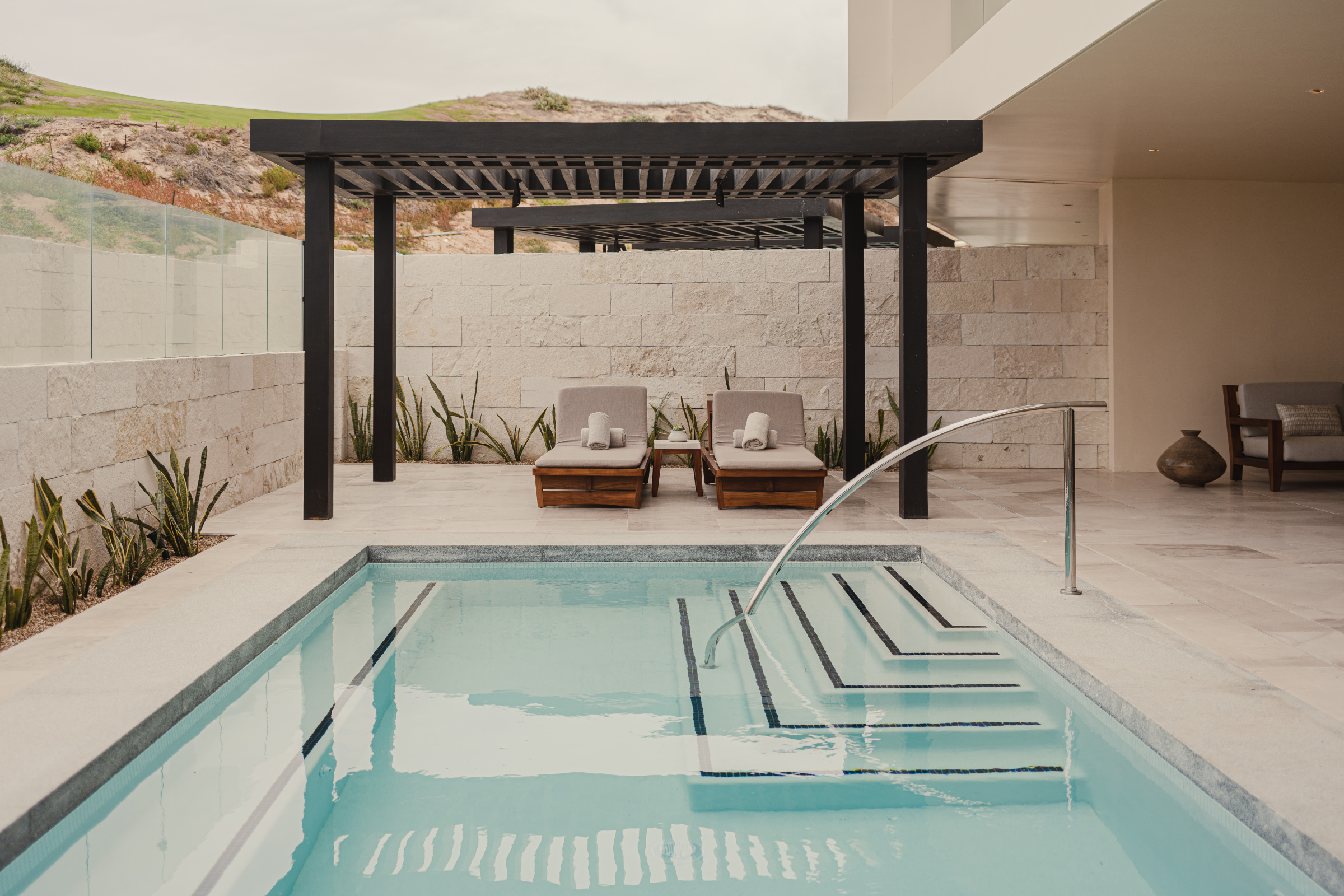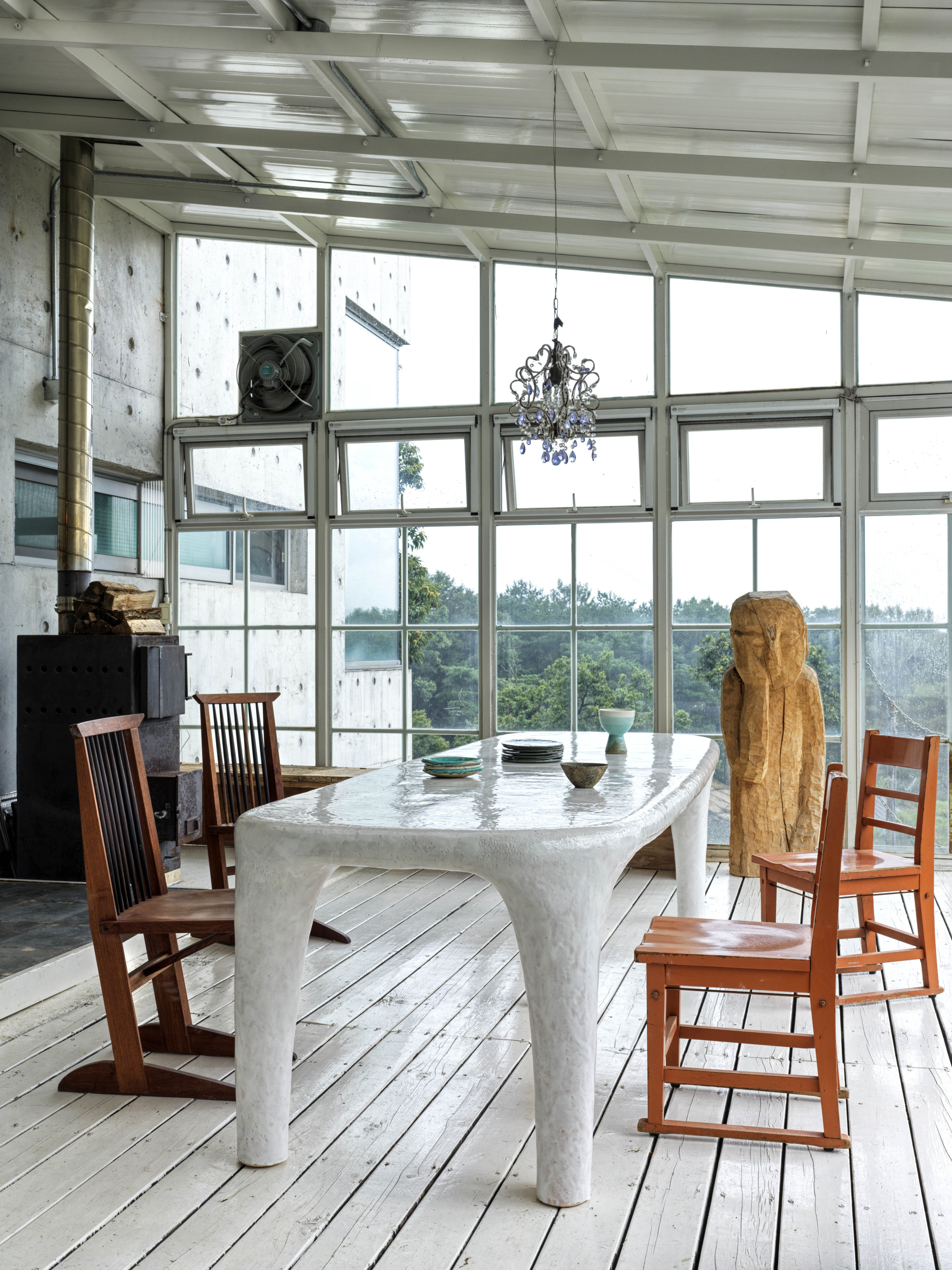When Carlos Naude and Whitney Brown, the creative duo behind Working Holiday Studio, purchased Casa Mami’s 2.5-acre property two years ago, the house was fenced in, corrupting the view of the California desert. The couple removed the fence and upgraded the patio entryway with LaCantina aluminum-framed glass French doors, giving visitors a glimpse at the sprawling landscape even as they step inside away from it.
Just outside of Joshua Tree in Pioneertown, the desert residence is an example of “all the stars aligning,” Carlos says. For years the pair, who live in LA, dreamed of having a vacation home they could rent out—a relaxing showroom-type space where visitors could easily buy the objects and furniture in the house.
- Whether open or closed, LaCantina aluminum-framed glass French doors give visitors a beautiful view of the Pioneertown desert. Photo by Carlos Naude
“When we would travel we’d go to a hotel and be like, ‘This chair is amazing; we want it for our home,’” Carlos says. “But it was impossible to find out who made it, where they got it, whether it was custom—you never can find out anything. That’s always been a frustration for us.”
- The living room centers around a Fish & Pink Confetti table with a Moooi Cloud Sofa, Waka Waka Cylinder Back Arm Chair, and an Armadillo Braid rug. A Malm vintage fire drum sits in the corner with firewood for kindling. Photo by Carlos Naude
So Casa Mami became the second home that could. Everything inside is for sale, from the Moooi Cloud Sofa to the Kinto teapot. “When guests stay at the house they get the full experience of not only seeing the products online but also being able to experience them in real life.”
- Inspired by Mexican architect Luis Barragán, Casa Mami’s yellow hallway includes a matching Unfold pendant lamp by Muuto and three stacked MENU Norm Oval wall mirrors. Photo by Carlos Naude
- A Louise Gray Harriet throw quilt hangs behind an Avocado Green Mattress, outfitted in Snowe’s Percale sheets and Softexture duvet cover. MENU’s Gridy Fungi shelves serve as nightstands, while Rich Brilliant Willing’s Brim wall sconces add light to the room at night. Photo by Carlos Naude
The home itself is a mix of Carlos and Whitney’s design interests. “Neither of us are trained designers; we did it by instinct,” Carlos says. “It’s a hodgepodge of things we like the most—from the warm, breezy feelings of the Mediterranean to the bold colors of Mexico and the minimalism and simplicity of Japan and Scandinavia.”
- In the kitchen guests can cook with Berghoff’s cast iron black cookware set on the Avanti 20-inch freestanding gas range. A custom Neenineen ceramic set sits with Snowe glasses and tumblers above the Smeg single-door refrigerator, while a Rich Brilliant Willing Akoya pendant hangs above the Bend Goods Bistro Table and Hay Soft Edge chairs. Photo by Carlos Naude
You can see the threads of their passions as you walk through the house: the white Greek-like exterior, the Luis Barragán-inspired monochromatic yellow hallway; a chair by Japanese designer Waka Waka alongside a Swedish MENU mirror.
On paper it sounds like the eclectic mix might not work, but in practice it does—providing the home with a dreamy medley of aesthetics and color alongside its beige, camouflaged neighbors. “All the houses in the desert are made to look like they can blend in with the environment,” Carlos says. “We wanted to do the opposite. We wanted to stand out.”
A version of this article originally appeared in Sixtysix Issue 05 with the headline “Desert Oasis.” Subscribe today.
